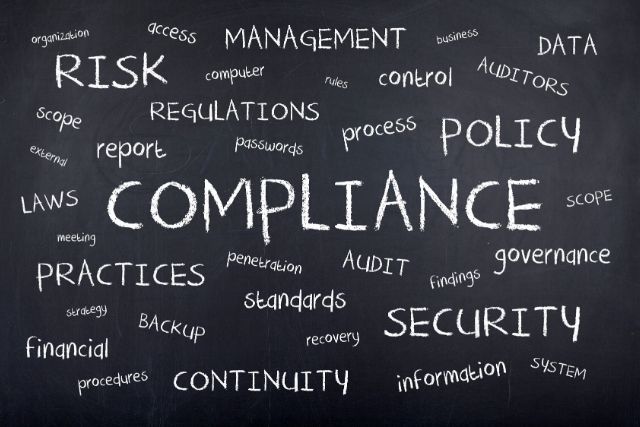How to Improve Compliance in a Company
Many large organizations struggle with compliance management. Since these institutions are custodians of extensive non-publicly available personal identifying data, it is no wonder that criminals regularly target them.
With the ever-increasing sophistication of data breach techniques in today’s business technology environment, financial institutions need to be on guard and have robust security measures to prevent unauthorized data access. By continuously innovating and testing the compliance programs you can ensure top-of-the-line security at all times.
7 Steps to Improving Your Company’s Compliance Program
Financial institutions need to continually revise their data management and storage programs to ensure up-to-date security compliance. Regularly reviewing security protocols and implementing new measures to prevent sophisticated intrusions is critical to lowering the risk of data breaches in the organization.
To improve your security compliance, you must evaluate the current security status and perform risk analysis. Industry standards and regulatory requirements should inform your risk analysis and guide you in creating a robust compliance program.
Your original compliance program should be regularly evaluated and improved based on changing business requirements and emerging threats. It is essential to follow a cycle of continuous monitoring, evaluation, mitigation, and response to meet industry and government compliance requirements.
Follow the Steps Below to Improve Risk Compliance in Your Organization.
1. Conduct an Annual Risk Analysis
To begin, conduct an annual risk analysis to uncover the threats faced by your organization and their potential impacts. To determine your company’s risks, review the infrastructure, equipment, and storage location of your data. This means carrying out a comprehensive review of networks, devices, systems, storage equipment, etc. that collect, transmit, and store data.
Criminals usually target financial institutions to get access to non-public, personally identifiable information such as an individual’s social security number, credit card number, home addresses, and so on. Organizations that use networks and software with known vulnerabilities are usually an easy target of criminals.
Finally, determine the potential impact that data breaches can have on your organization. The consequence of breaches can be both financial and non-financial, such as loss of customer trust, regulatory fines, jail time, among others.
2. Update Compliance Policies at least Annually
Improving your compliance program requires constant documentation of processes and procedures. Through documentation, internal and external auditors can understand the company’s control processes and their alignment with cybersecurity regulations.
As the company grows and data requirement changes, the compliance policies should be updated to accommodate the changes.
3. Continuously Monitor Security Status for Accountability
Monitoring your networks, systems, and software consistently is critical to improving your compliance program. Cybercriminals are continually upping their penetration tactics. Therefore, financial organizations need to match up to the play with more sophisticated data security strategies.
Constantly monitoring and improving the existing infrastructure plays a pivotal role in ensuring the security of sensitive data.
4. Have Standby Response and Remediation Procedures
New data threats are emerging every day. To keep your organization safe, strategic steps for responding and remediating unexpected attacks should be in place. This means continuously monitoring your data environment for new threats and the measures to implement to mitigate the threats.
You should refine your organization’s threat response initiatives regularly to ensure they are in line and up to date with the industry’s best practices.
5. Evaluate Mitigation Strategies
Having robust mitigation controls will bolster your compliance program to withstand malicious activities from cybercriminals. With cyber threats always evolving, your mitigation controls should also change to counter them.
Regularly review your internal controls and align them with updated mitigation controls to ensure a robust compliance program. Updating the controls will ensure your cyber environment is impenetrable.
6. Document Program Improvement
Documentation helps you to keep track of the existing internal control measures. Through documentation, you can know whether the internal controls comply with regulatory requirements, when they were last revised, how internal and external auditors rated them, and the recommendations made on every assessment.
Documenting internal and external compliance measures will ensure your firm stays on top of regulatory and industry compliance requirements.
7. Update the Organization’s Risk Profile Regularly
Evaluating and updating your company’s risk profile will help to ensure your data environment is secure from malicious third parties. Your risk profile should be updated periodically, and anytime there is an intrusion or known emerging threats in the industry. Regular and random audits should also be carried out to determine the extent of your risk profile.
Improving Risk Compliance Using Automated Solutions
There are various software programs that you can use to improve your firm’s risk compliance program. The programs provide a “single source of truth,” allowing you to manage risk across multiple departments in real-time. Some automated solutions can gauge your company’s risk compliance against industry standards and recommended regulatory requirements.
Through compliance management software, organization employees can log their compliance activities so that managers can know what everyone is doing. “To do” lists for compliance programs can also be made and completed activities tracked to give managers an overview of the status of the organization’s compliance efforts.
You can use workflow tagging on compliance monitoring software to evaluate productivity and determine improvements to be made in your compliance program. Moreover, with audit trails capability, managers can establish a document management program to provide specific guidelines regarding the remediation procedures to be done in case of data breaches.






